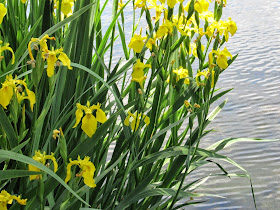The low and wetland origins of the native species should not imply that Louisiana irises require aquatic culture. They do love water and thrive in ponds and boggy settings, but Louisiana`s also grow and bloom exceedingly well in typical garden beds. These irises should not be allowed to dry out during periods of drought, however. They will stay green and grow through hot weather only with ample moisture.
Louisiana irises should be grown in half to full sun. Less than a half day of sun will diminish bloom. It is highly advisable to avoid close competition with large trees or plants with extensive root systems that would use most of the soil moisture. In hot climates, unless the irises are in ample water, full sun may stress the plants at certain times of the year.
Louisiana irises can be mixed with most smaller ornamental plants. They also can be grown in beds consisting entirely of irises, although iris-only beds may not be as attractive in late summer as the foliage begins to die back in preparation for the new growth cycle that begins in the fall. Any yellowed foliage can and should be removed to improve appearance and encourage new growth.

No comments:
Post a Comment